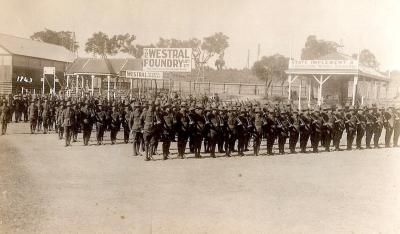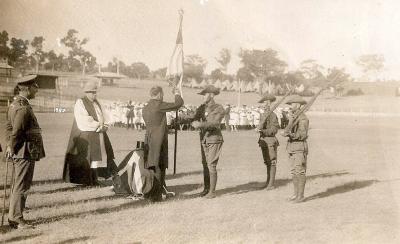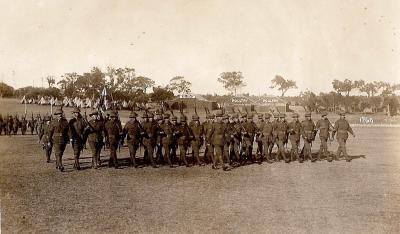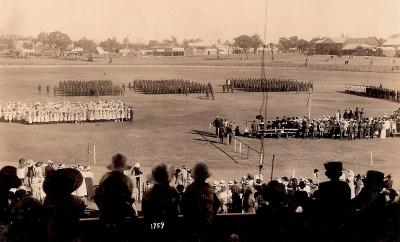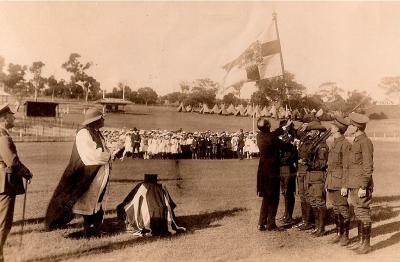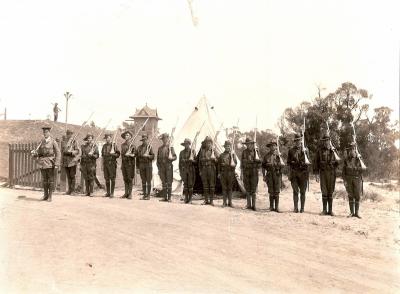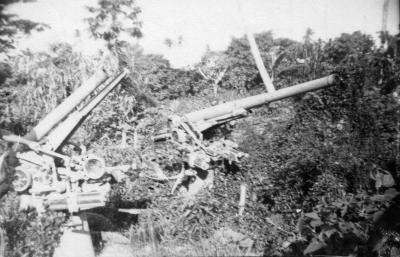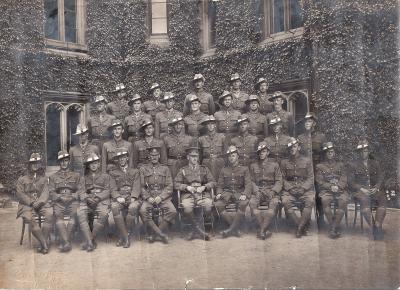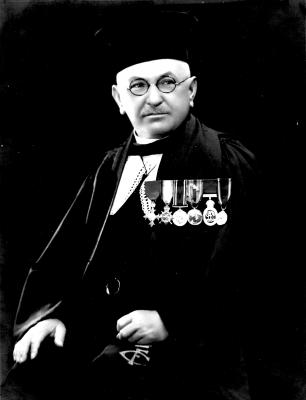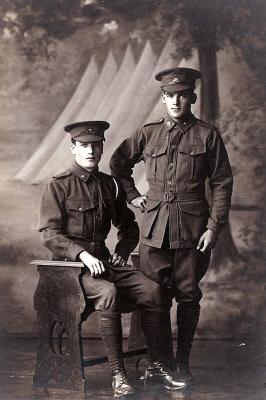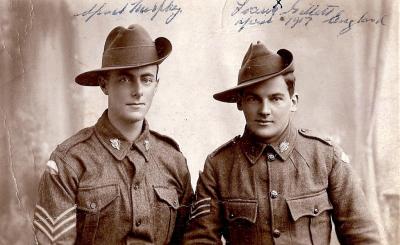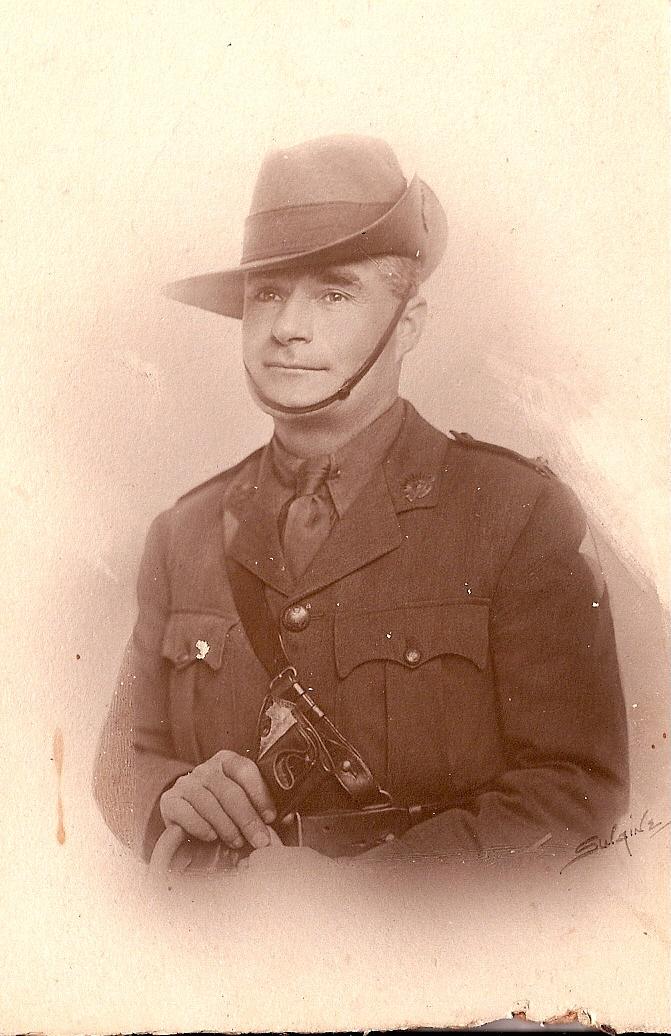World War 1, Europe, 4364 BIRT, 28 Battalion, 1917
1917Studio portrait of 4364 Lieutenant James Coombe Birt Military Cross Killed in Action 3 October 1918
The 28th Battalion was raised at Blackboy Camp in Western Australia on 16 April 1915 from recruits previously earmarked for the 24th Battalion, which was instead being raised in Victoria. The battalion left Australia in June, and, after two months spent training in Egypt, landed at Gallipoli on 10 September. The 28th had a relatively quiet time at Gallipoli and the battalion departed the peninsula in December, having suffered only light casualties.
The 28th Battalion proceeded to the Western Front, as part of the 7th Brigade, 2nd Australian Division. The 28th Battalion took part in its first major battle at Pozieres between 28 July and 6 August 1916. After a spell in a quieter sector of the front in Belgium, the 28th Battalion took part in confused and costly fighting in the Somme Valley in October 1916..
During the major battles of 1917 the 28th found itself at the second battle of Bullecourt, part of the third phase at the battle of Menin Road, and was in reserve during the capture of Broodseinde Ridge. The battalion was also in the battle of Poelcappelle.
In April 1918, the 28th fought to turn back the German spring offensive and, from 8 August participated in the joint British and French offensive that marked the beginning of Germany's defeat. The Battalion was prominent in the fighting to secure crossing points over the Somme River around Peronne, and in the advance beyond Mont St Quentin. The 28th's last actions of the war were fought as part of the effort to break through the Beaurevoir Line in the first week of October 1918. The first members of the battalion began returning to Australia in January, and the 28th was disbanded in March 1919.
Details
Details
Military Cross
'For conspicuous gallantry during an attack. He led his men splendidly to their objective, himself rushing an enemy strong point and capturing 20 of the enemy and two machine guns. On the objective he quickly consolidated his position, and sent back useful information. Later he led a party against an enemy strong point, and captured 40 prisoners and four machine guns. He did magnificent work.'
Source: 'Commonwealth Gazette' No. 61
Date: 23 May 1919
Open in Google Maps
Nearest geotagged records:
- World War 1, Australia, Western Australia, 1387 FANNING, 10 Light Horse (0.01km away)
- World War 1, Australia, Western Australia, 3258 PARNELL, 10 Light Horse (0.02km away)
- World War 1, Australia, Western Australia, 3296 HAMS, 10 Light Horse (0.02km away)
- World War 1, Australia, Western Australia, 958 MINITER, 10 Light Horse (0.02km away)
- Tambellup CWA Centre (0.27km away)
- World War 1, Australia, Western Australia, 370A BESSEN, 10 Light Horse (0.36km away)
- World War 1, Australia, Western Australia, 2222 MURPHY, 10 Light Horse (0.62km away)
Nearby places: View all geotagged records »
Australian Army Museum of Western Australia
Australian Army Museum of Western Australia
Other items from Australian Army Museum of Western Australia
- World War 1, Australia Western Australia Claremont, 44 Battalion, 1916
- World War 1, Australia Western Australia Claremont, 44 Battalion, 1916
- World War 1, Western Australia Claremont, 44 Battalion, 1916
- World War 1, Western Australia Claremont, 44 Battalion, 1916
- World War 1 , Australia Western Australia Claremont, 44 Battalion, 1916
- World War 1, Australia Western Australia Kings Park,
- World War 2, Australia, 1940
- World War 1, Europe Sandhurst, 1917
- World War 1, Australia Western Australia, FREEDMAN, Chaplain Corps, 1919
- World War 1, Australia Western Australia, GILLETT, 44 Battalion, 1915
- World War 1, Europe, 445 GILLETT and 275 MURPHY, 44 Battalion, 1917
- World War 1, Europe, France, 44 Battalion, 1918
